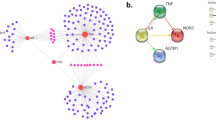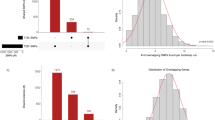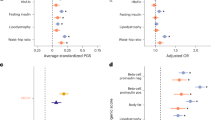Abstract
The high prevalence of type 2 diabetes and its uneven distribution among human populations is both a major public health concern and a puzzle in evolutionary biology. Why is this deleterious disease so common, while the associated genetic variants should be removed by natural selection? The ‘thrifty genotype’ hypothesis proposed that the causal genetic variants were advantageous and selected for during the majority of human evolution. It remains, however, unclear whether genetic data support this scenario. In this study, we characterized patterns of selection at 10 variants associated with type 2 diabetes, contrasting one herder and one farmer population from Central Asia. We aimed at identifying which alleles (risk or protective) are under selection, dating the timing of selective events, and investigating the effect of lifestyle on selective patterns. We did not find any evidence of selection on risk variants, as predicted by the thrifty genotype hypothesis. Instead, we identified clear signatures of selection on protective variants, in both populations, dating from the beginning of the Neolithic, which suggests that this major transition was accompanied by a selective advantage for non-thrifty variants. Combining our results with worldwide data further suggests that East Asia was particularly prone to such recent selection of protective haplotypes. As much effort has been devoted so far to searching for thrifty variants, we argue that more attention should be paid to the evolution of non-thrifty variants.
Similar content being viewed by others
Log in or create a free account to read this content
Gain free access to this article, as well as selected content from this journal and more on nature.com
or
References
Diamond J : Evolution, consequences and future of plant and animal domestication. Nature 2002; 418: 700–707.
Brown EA : Genetic explorations of recent human metabolic adaptations: hypotheses and evidence. Biol Rev Camb Philos Soc 2012.
Zimmet P, Alberti KG, Shaw J : Global and societal implications of the diabetes epidemic. Nature 2001; 414: 782–787.
Herder C, Roden M : Genetics of type 2 diabetes: pathophysiologic and clinical relevance. Eur J Clin Invest 2011; 41: 679–692.
Morris AP, Voight BF, Teslovich TM et al: Large-scale association analysis provides insights into the genetic architecture and pathophysiology of type 2 diabetes. Nat Genet 2012; 44: 981–990.
Pavard S, Metcalf CJ : Negative selection on BRCA1 susceptibility alleles sheds light on the population genetics of late-onset diseases and aging theory. PLoS One 2007; 2: e1206.
Stern MP : Diabetes and cardiovascular disease. The ‘common soil’ hypothesis. Diabetes 1995; 44: 369–374.
Robitaille J, Grant AM : The genetics of gestational diabetes mellitus: evidence for relationship with type 2 diabetes mellitus. Genet Med 2008; 10: 240–250.
Diamond J : The double puzzle of diabetes. Nature 2003; 423: 599–602.
Neel JV : Diabetes mellitus: a ‘thrifty’ genotype rendered detrimental by ‘progress’? Am J Hum Genet 1962; 14: 353–362.
Neel JV : The thrifty genotype revisited; in: Kobberling J, Tattersall RB, (eds): The Genetics of Diabetes Mellitus. London: Academic Press, 1982, vol Serono Symposium No 47..
Neel JV, Weder AB, Julius S : Type II diabetes, essential hypertension, and obesity as ‘syndromes of impaired genetic homeostasis’: the ‘thrifty genotype’ hypothesis enters the 21st century. Perspect Biol Med 1998; 42: 44–74.
Prentice AM : Starvation in humans: evolutionary background and contemporary implications. Mech Ageing Dev 2005; 126: 976–981.
Benyshek DC, Watson JT : Exploring the thrifty genotype's food-shortage assumptions: a cross-cultural comparison of ethnographic accounts of food security among foraging and agricultural societies. Am J Phys Anthropol 2006; 131: 120–126.
Brand Miller JC, Colagiuri S : The carnivore connection: dietary carbohydrate in the evolution of NIDDM. Diabetologia 1994; 37: 1280–1286.
Colagiuri S, Brand Miller J : The ‘carnivore connection’—evolutionary aspects of insulin resistance. Eur J Clin Nutr 2002; 56 (Suppl 1): S30–S35.
Wells JC : Ethnic variability in adiposity and cardiovascular risk: the variable disease selection hypothesis. Int J Epidemiol 2009; 38: 63–71.
Roth J : Evolutionary speculation about tuberculosis and the metabolic and inflammatory processes of obesity. JAMA 2009; 301: 2586–2588.
Allen JS, Cheer SM : ‘Civilisation’ and the thrifty genotype. Asia Pacific J Clin Nutr 1996; 4: 341–342.
Hancock AM, Witonsky DB, Gordon AS et al: Adaptations to climate in candidate genes for common metabolic disorders. PLoS Genet 2008; 4: e32.
Speakman JR : Thrifty genes for obesity, an attractive but flawed idea, and an alternative perspective: the ‘drifty gene’ hypothesis. Int J Obes (Lond) 2008; 32: 1611–1617.
Klopfstein S, Currat M, Excoffier L : The fate of mutations surfing on the wave of a range expansion. Mol Biol Evol 2006; 23: 482–490.
Fullerton SM, Bartoszewicz A, Ybazeta G et al: Geographic and haplotype structure of candidate type 2 diabetes susceptibility variants at the calpain-10 locus. Am J Hum Genet 2002; 70: 1096–1106.
Ruiz-Narvaez E : Is the Ala12 variant of the PPARG gene an ‘unthrifty allele’? J Med Genet 2005;; 42: 547–550.
Myles S, Hradetzky E, Engelken J et al: Identification of a candidate genetic variant for the high prevalence of type II diabetes in Polynesians. Eur J Hum Genet 2007; 15: 584–589.
Myles S, Davison D, Barrett J, Stoneking M, Timpson N : Worldwide population differentiation at disease-associated SNPs. BMC Med Genomics 2008; 1: 22.
Pickrell JK, Coop G, Novembre J et al: Signals of recent positive selection in a worldwide sample of human populations. Genome Res 2009; 19: 826–837.
Southam L, Soranzo N, Montgomery SB et al: Is the thrifty genotype hypothesis supported by evidence based on confirmed type 2 diabetes- and obesity-susceptibility variants? Diabetologia 2009; 52: 1846–1851.
Chen R, Corona E, Sikora M et al: Type 2 diabetes risk alleles demonstrate extreme directional differentiation among human populations, compared to other diseases. PLoS Genet 2012; 8: e1002621.
Vander Molen J, Frisse LM, Fullerton SM et al: Population genetics of CAPN10 and GPR35: implications for the evolution of type 2 diabetes variants. Am J Hum Genet 2005; 76: 548–560.
Helgason A, Palsson S, Thorleifsson G et al: Refining the impact of TCF7L2 gene variants on type 2 diabetes and adaptive evolution. Nat Genet 2007; 39: 218–225.
Gibson G : Human evolution: thrifty genes and the dairy queen. Curr Biol 2007; 17: R295–R296.
Klimentidis YC, Abrams M, Wang J, Fernandez JR, Allison DB : Natural selection at genomic regions associated with obesity and type-2 diabetes: East Asians and sub-Saharan Africans exhibit high levels of differentiation at type-2 diabetes regions. Hum Genet 2011; 129: 407–418.
Martinez-Cruz B, Vitalis R, Segurel L et al: In the heartland of Eurasia: the multilocus genetic landscape of Central Asian populations. Eur J Hum Genet 2011; 19: 216–223.
Patin E, Laval G, Barreiro LB et al: Inferring the demographic history of African farmers and pygmy hunter-gatherers using a multilocus resequencing data set. PLoS Genet 2009; 5: e1000448.
Librado P, Rozas J : DnaSP v5: a software for comprehensive analysis of DNA polymorphism data. Bioinformatics 2009; 25: 1451–1452.
Tajima F : Statistical method for testing the neutral mutation hypothesis by DNA polymorphism. Genetics 1989; 123: 585–595.
Fu YX, Li WH : Statistical tests of neutrality of mutations. Genetics 1993; 133: 693–709.
Fu YX : Statistical tests of neutrality of mutations against population growth, hitchhiking and background selection. Genetics 1997; 147: 915–925.
Zeng K, Fu YX, Shi S, Wu CI : Statistical tests for detecting positive selection by utilizing high-frequency variants. Genetics 2006; 174: 1431–1439.
Benjamini Y, Hochberg Y : Controlling the false discovery rate: a practical and powerful approach to multiple testing. J R Statistic Soc B 1995; 57: 289–300.
Rousset F : GENEPOP’007: a complete re-implementation of the GENEPOP software for Windows and Linux. Mol Ecol Res 2008; 8: 103–106.
Beaumont M, Nichols RA : Evaluating loci for use in the genetic analysis of population structure. Proc R Soc Lond 1996; 263: 1619–1626.
Wright S : The genetical structure of populations. Ann Eugen 1951; 15: 323–354.
Bonin A, Taberlet P, Miaud C, Pompanon F : Explorative genome scan to detect candidate loci for adaptation along a gradient of altitude in the common frog (Rana temporaria). Mol Biol Evol 2006; 23: 773–783.
Segurel L, Lafosse S, Heyer E, Vitalis R : Frequency of the AGT Pro11Leu polymorphism in humans: Does diet matter? Ann Hum Genet 2010; 74: 57–64.
Scheet P, Stephens M : A fast and flexible statistical model for large-scale population genotype data: applications to inferring missing genotypes and haplotypic phase. Am J Hum Genet 2006; 78: 629–644.
Gautier M, Vitalis R : rehh: an R package to detect footprints of selection in genome-wide SNP data from haplotype structure. Bioinformatics 2012; 28: 1176–1177.
Voight BF, Kudaravalli S, Wen X, Pritchard JK : A map of recent positive selection in the human genome. PLoS Biol 2006; 4: e72.
Austerlitz F, Kalaydjieva L, Heyer E : Detecting population growth, selection and inherited fertility from haplotypic data in humans. Genetics 2003; 165: 1579–1586.
Wolfram Research I. Mathematica; in: 8.0V (ed). Wolfram Research, Inc.: Champaign, Illinois,, 2010.
Casto AM, Feldman MW : Genome-wide association study SNPs in the human genome diversity project populations: does selection affect unlinked SNPs with shared trait associations? PLoS Genet 2011; 7: e1001266.
Przeworski M, Coop G, Wall JD : The signature of positive selection on standing genetic variation. Evolution 2005; 59: 2312–2323.
Fullerton SM, Clark AG, Weiss KM et al: Apolipoprotein E variation at the sequence haplotype level: implications for the origin and maintenance of a major human polymorphism. Am J Hum Genet 2000; 67: 881–900.
Nakajima T, Wooding S, Sakagami T et al: Natural selection and population history in the human angiotensinogen gene (AGT): 736 complete AGT sequences in chromosomes from around the world. Am J Hum Genet 2004; 74: 898–916.
Thompson EE, Kuttab-Boulos H, Witonsky D, Yang L, Roe BA, Di Rienzo A : CYP3A variation and the evolution of salt-sensitivity variants. Am J Hum Genet 2004; 75: 1059–1069.
Hancock AM, Witonsky DB, Ehler E et al: Colloquium paper: human adaptations to diet, subsistence, and ecoregion are due to subtle shifts in allele frequency. Proc Natl Acad Sci USA 2010; 107 (Suppl 2): 8924–8930.
Heyer E, Brazier L, Segurel L et al: Lactase persistence in central Asia: phenotype, genotype, and evolution. Hum Biol 2011; 83: 379–392.
O'Keefe JH, Cordain L : Cardiovascular disease resulting from a diet and lifestyle at odds with our Paleolithic genome: how to become a 21st-century hunter-gatherer. Mayo Clin Proc 2004; 79: 101–108.
Jew S, AbuMweis SS, Jones PJ : Evolution of the human diet: linking our ancestral diet to modern functional foods as a means of chronic disease prevention. J Med Food 2009; 12: 925–934.
Acknowledgements
We thank all the people who volunteered to participate in this study or who helped us in the field. We thank K. Zeng for providing us his program for computing the E statistics. This work was supported by the ‘Service de Systématique Moléculaire’ of the Muséum national d'Histoire naturelle (UMS 2700 CNRS) and the ‘Consortium National de Recherche en Génomique’: it is part of the agreement number 2005/67 between the Genoscope and the Muséum National d'Histoire Naturelle on the project 'Macrophylogeny of life' directed by Guillaume Lecointre. This work was funded by the ANR grant ‘NUTGENEVOL’ (07-BLAN-0064). RV also acknowledges support from the ANR grant ‘EMILE’ (09-BLAN-0145-01). The funders had no role in study design, data collection and analysis, decision to publish or preparation of the manuscript.
Author information
Authors and Affiliations
Corresponding author
Ethics declarations
Competing interests
The authors declare no conflict of interest.
Additional information
Supplementary Information accompanies this paper on European Journal of Human Genetics website
Rights and permissions
About this article
Cite this article
Ségurel, L., Austerlitz, F., Toupance, B. et al. Positive selection of protective variants for type 2 diabetes from the Neolithic onward: a case study in Central Asia. Eur J Hum Genet 21, 1146–1151 (2013). https://doi.org/10.1038/ejhg.2012.295
Received:
Revised:
Accepted:
Published:
Issue date:
DOI: https://doi.org/10.1038/ejhg.2012.295
Keywords
This article is cited by
-
Eco-Evolutionary Dynamics of the Human-Gut Microbiota Symbiosis in a Changing Nutritional Environment
Evolutionary Biology (2022)
-
Diseases are Not Adaptations and Neither are Their Causes
Biological Theory (2020)
-
Assessment of the potential role of natural selection in type 2 diabetes and related traits across human continental ancestry groups: comparison of phenotypic with genotypic divergence
Diabetologia (2020)
-
Divergent evolution and purifying selection of the Type 2 diabetes gene sequences in Drosophila: a phylogenomic study
Genetica (2020)
-
Lack of direct evidence for natural selection at the candidate thrifty gene locus, PPARGC1A
BMC Medical Genetics (2016)



